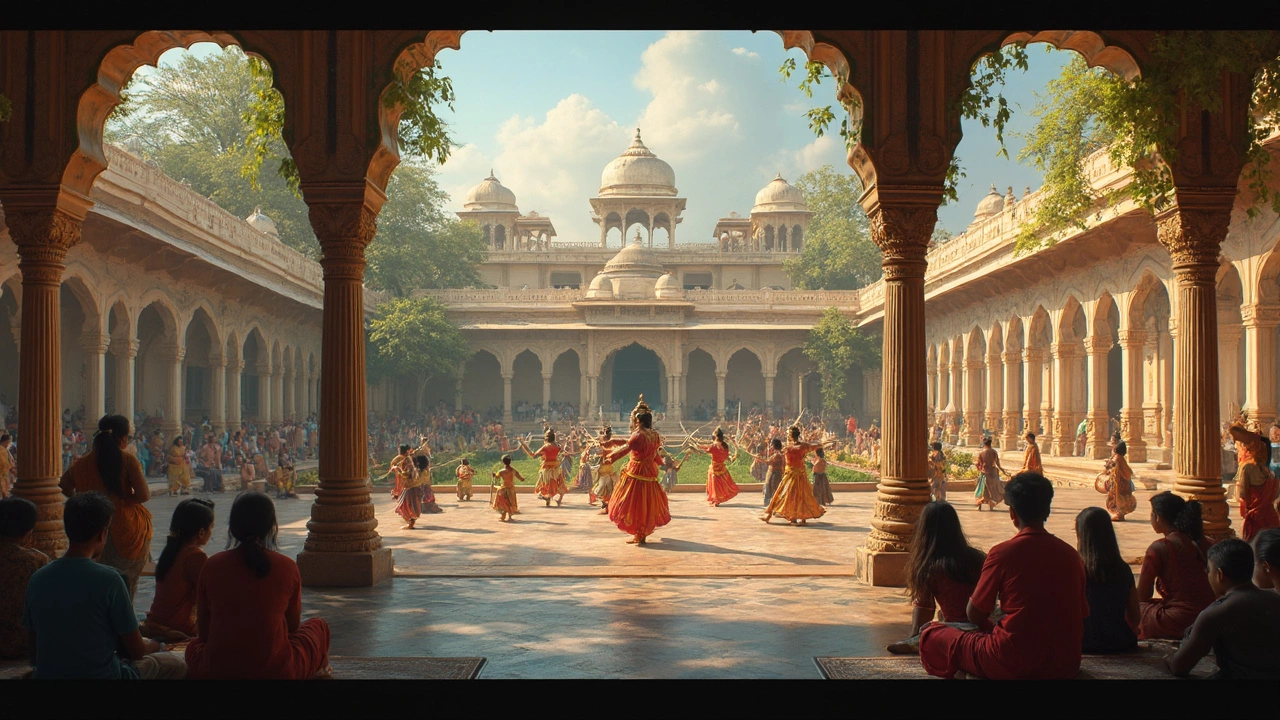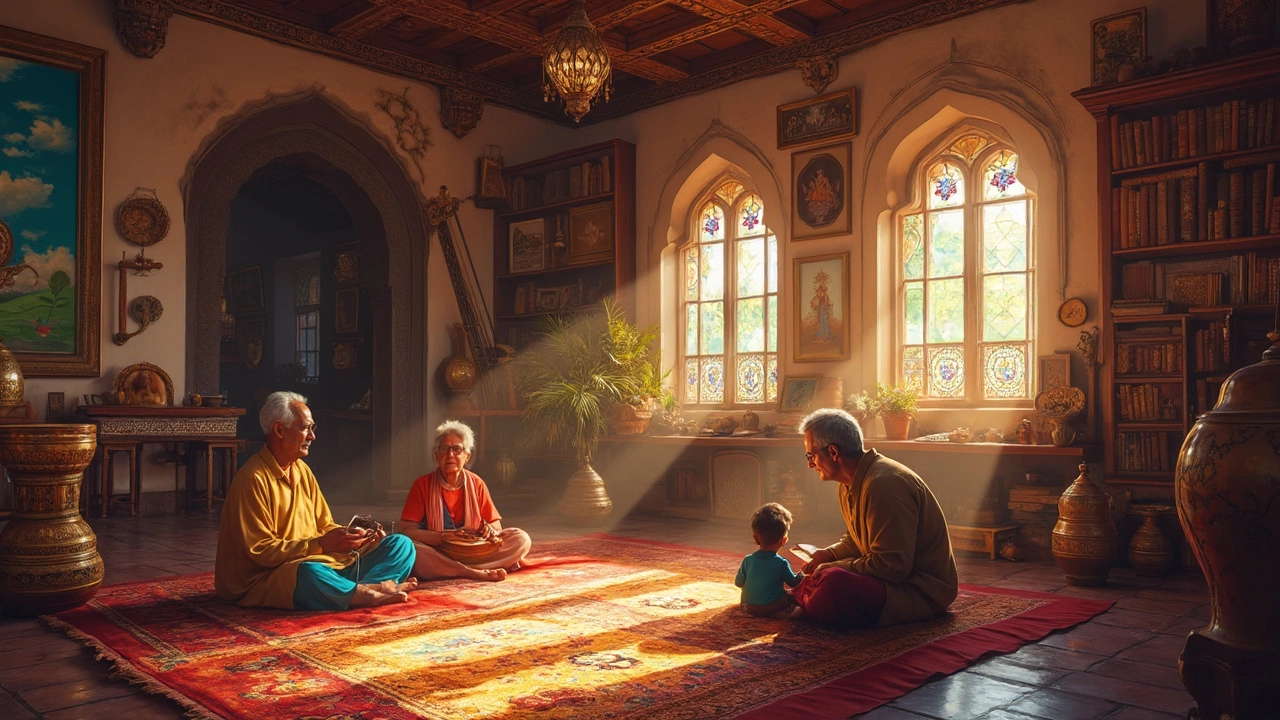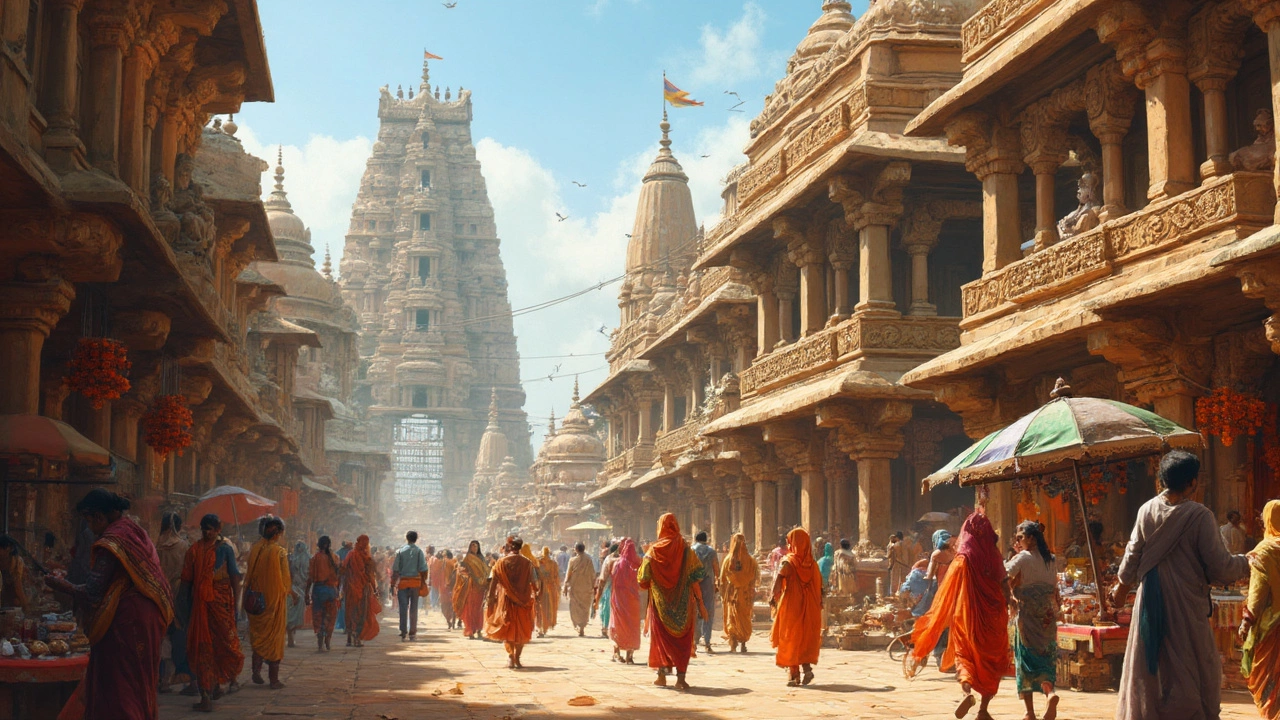The word ‘heritage’ gets thrown around, but in India, it’s pretty much baked into everyday life. Walk down any street in a city like Delhi, Jaipur, or Varanasi, and you’ll bump into a monument, a temple, or a centuries-old market. It’s not by accident—India has seen so many empires, ideas, and people wash over it that the layers are practically endless.
If you’re curious why India ranks so high on the world heritage map, the real secret is how history and tradition stick around. India doesn’t hide its old stuff away; the ancient and modern live side by side. Whether you’re a traveler, a student, or someone dreaming of a cultural adventure, knowing what makes Indian heritage so rich makes every trip and every story you hear a lot more meaningful.
People talk about the Taj Mahal like it’s a one-off, but there are hundreds more hidden gems—temples that have been worshipped in for a thousand years, forts that survived sieges and storms, even living crafts handed down the family line for generations. Exploring these isn’t just about ticking sites off a list; it’s about stepping into real stories that shaped the country you see today.
- Layers of History and Dynasties
- Mughal Marvels and Royal Legacies
- Diverse Cultures and Traditions
- Living Heritage: Festivals and Art Forms
- Practical Tips for Exploring India’s Heritage
Layers of History and Dynasties
Ever wondered why India seems like a gigantic history museum with no walls? The answer lies in its impressive lineup of dynasties and rulers. For over 5,000 years, India has been shaped by waves of kingdoms, each leaving behind something solid—be it stone temples, grand forts, or city plans that still guide people today.
Start with the Indus Valley Civilization. These folks were way ahead of their time, building well-planned cities like Mohenjo-Daro and Harappa way back in 2500 BCE. Archaeologists often find ancient drainage systems and tiny engraved seals in these ruins—clear signs that city-life ran deep here long before most places on Earth even considered indoor plumbing.
Fast forward to the Maurya and Gupta periods, which pumped out iconic landmarks. The Mauryas gave us the stupa at Sanchi (yes, that domed building is over 2,300 years old) while the Guptas sparked a golden age of art and science. Then you’ve got the Cholas—legends who built the Brihadeeswara Temple in Tanjore, carved from a single stone block and still standing tall after 1,000 years.
What sets India apart is this endless overlap: when one dynasty faded, another moved in, often building on top of what was left. Layer by layer, this created architectural mashups you rarely see elsewhere. For instance, Delhi is called the “city of ruins” for a reason—it’s been the capital of at least eight different kingdoms, each leaving its stamp.
| Dynasty | Main Era | Signature Site |
|---|---|---|
| Indus Valley | c. 2500–1900 BCE | Harappa, Mohenjo-Daro |
| Maurya | c. 322–185 BCE | Sanchi Stupa |
| Gupta | c. 320–550 CE | Ajanta Caves |
| Chola | c. 850–1279 CE | Brihadeeswara Temple |
| Delhi Sultanate | 1206–1526 CE | Qutub Minar |
All these name-drops aren’t just trivia. Everywhere you travel—from dusty Rajasthan forts to the older bits of Kolkata’s streets—you’re actually walking through India’s multi-layered history. This is why India heritage isn’t just a buzzword; it’s real, you can see it, and you can even touch it.
Mughal Marvels and Royal Legacies
When you think of classic Indian architecture, chances are you’re picturing something the Mughals built. The Mughal era changed the game for design, city planning, and even food. The most famous example is the Taj Mahal—a UNESCO World Heritage Site that attracts millions every year. It’s really hard to grasp its scale and detail until you see it up close. It took about 20 years and over 20,000 workers to finish. But there’s way more than just the Taj Mahal: Agra Fort, Humayun’s Tomb in Delhi, and Fatehpur Sikri are all unique in their own right, mixing red sandstone and white marble in a style that’s instantly recognizable.
The real twist is how each region in India put its own spin on royalty. Over in Rajasthan, you’ve got the massive Amber Fort in Jaipur, which is like a maze with courtyards, hidden rooms, and wall paintings. Udaipur’s City Palace shows off Rajasthan’s love for mirror work, marble, and grand water views—the royal family still lives in a private section! Karnataka has the Mysore Palace, which pulls in design flavors from all over the world, from Hindu carvings to British influences.
If you love history, you’ll spot the way the Mughals didn’t just build pretty places—they introduced new gardens, layouts, and water systems. Their legacy shaped not just buildings, but how cities grew. Many of these spots are still used for festivals or parades. So, when exploring, don’t just snap photos. Look for the details: Persian-style gardens, delicate inlay work, calligraphy on the walls, and clever cooling systems that make you wonder how people designed all this centuries before air conditioning was a thing.
- Visiting early morning or late afternoon means fewer crowds and better photos.
- Most heritage sites offer guided tours—ask for a local expert to get real stories behind the monuments.
- Check for light and sound shows at forts like Red Fort (Delhi) or Amer Fort (Jaipur) for an epic way to see history come alive.

Diverse Cultures and Traditions
India’s heritage isn’t some one-size-fits-all story. There are 28 states and 8 union territories, and nearly every one has its own language, food, dress, and ways of celebrating. This is why you’ll see Hindu temples in the South with towers painted in every color, while up North, Sikh gurdwaras stand tall and marble-white. Tribal art is still alive in places like Odisha and Chhattisgarh, while Buddhist monasteries sit quiet in Ladakh.
Languages play a massive role—there are 22 official ones, with over a thousand spoken across the country. Walk ten miles in some parts of India and you might hear three different dialects. This melting pot is a big reason why the India heritage experience is so wild and varied.
| Region | Main Language(s) | Unique Tradition |
|---|---|---|
| Punjab | Punjabi | Bhangra dance, Sikh festivals |
| Kerala | Malayalam | Onam festival, Kathakali dance |
| Rajasthan | Hindi, Rajasthani | Desert festivals, puppet shows |
| Nagaland | Nagamese, English | Hornbill Festival, tribal crafts |
| West Bengal | Bengali | Durga Puja, Baul music |
Religious diversity is the heartbeat. India is home to major world faiths—Hinduism, Islam, Christianity, Sikhism, Buddhism, and Jainism. This shows up in food habits (expect vegetarian and non-veg options everywhere), holidays (like Diwali, Eid, Christmas, and more), and famous sites. Ever seen the Golden Temple in Amritsar or the mosque at Fatehpur Sikri? Both are tourist magnets, but they exist because different communities have carved out their places over centuries.
Even the clothes are a lesson in diversity—saris, turbans, lungis, and salwar kameez aren’t just fashion statements; they tell you something about where people are from. Craft markets buzz with everything from Kashmiri carpets to Kanchipuram silk sarees, showing off crazy local techniques.
- If you travel across India, try joining at least one festival or visiting a neighborhood market for crafts—it beats a museum for learning about heritage.
- Don’t forget to sample local food in every region. Sometimes, the recipe itself has a story that’s older than most monuments.
Living Heritage: Festivals and Art Forms
The wild thing about India’s heritage is that it isn’t just tucked away in old buildings—it’s alive and on full display everywhere. Walk into any city or village, and there’s a good chance you’ll run into a celebration or see a centuries-old art form in action. This is where the country stands out, keeping its culture rolling with stuff you can actually see, touch, and join in on.
India’s festivals are a serious affair. India heritage shines brightest during events like Diwali, the Festival of Lights, when millions of lamps light up homes and streets. Holi turns towns into rainbows as people throw colored powder. Down south in Kerala, Onam brings massive flower carpets and snake boat races. And it’s not just Hindu festivals—Eid, Christmas, and even the Buddhist Buddha Purnima have huge turnouts. Basically, there’s a big festival for every month and region. Check out this quick breakdown:
| Festival | Main Region | Key Activity |
|---|---|---|
| Diwali | All over India | Lighting diyas, fireworks, sweets |
| Holi | Northern India | Throwing colors, music, water fights |
| Eid-ul-Fitr | Nationwide | Big prayers, feasts, giving to the poor |
| Onam | Kerala | Flower decorations, boat races, harvest games |
| Bihu | Assam | Dancing, community meals, marking the harvest |
It doesn’t stop at festivals. India’s traditional arts are everywhere—and not old news, either. Whether it’s Bollywood dance evolving from classical forms, or hand-painted Madhubani art still popping up on walls and saris, locals keep old skills alive. Some jaw-dropping ones to see up close:
- Kathakali from Kerala: Dance drama with wild makeup and costumes. Shows run daily in Kochi and Trivandrum.
- Warli Painting from Maharashtra: Tribal art making its way onto global gallery walls. Artists give workshops for visitors.
- Kumbh Mela: The world’s biggest human gathering. Every twelve years, millions gather for a bathe and a blessing. Last time, 50 million people showed up in a single day!
- Chhau Dance from West Bengal: Martial moves, masks, and real village crowds.
Tip: Don’t just watch—join a local block during Holi, or take a drop-in pottery class in Jaipur. Even shopping has its roots in ancient crafts; every region’s got its master weaver or potter. Real Indian heritage shows itself in daily life, not just at big tourist stops.

Practical Tips for Exploring India’s Heritage
Ready to check out India’s heritage sites? It’s easy to be overwhelmed—there’s just so much to see. Here’s how you can actually make it work and get the most out of every visit.
- India heritage sites are spread far and wide. Pick a region or city and focus your plan there. For example, Rajasthan packs in forts and palaces like Amer Fort and City Palace, while Tamil Nadu has ancient temples like Brihadeeswarar and Meenakshi.
- Time your visit well. Some sites, like the Taj Mahal, see fewer crowds at sunrise or late afternoon. Meanwhile, catching a festival—like Holi in Mathura or Durga Puja in Kolkata—shows you living traditions in action, but expect bigger crowds.
- Dress with respect. Most temples and mosques have dress codes: cover your shoulders and knees, and carry a scarf or shawl. Shoes come off at the entrance, so slip-ons help.
- Get a local guide if you can. At places like Hampi or Fatehpur Sikri, guides bring stories to life that you won’t find on a plaque or in a brochure. Some sites also have audio tours, so check in advance.
- Stay hydrated—especially in hot regions. Carry water and use refill stations at some major sites to avoid single-use plastics. Currencies for entry tickets are usually accepted in cash or via phone apps, but network coverage can get patchy in smaller towns.
Looking for hidden gems? Beyond the famous landmarks, small towns like Orchha or Chettinad are packed with untouched architecture and fewer tourists. Don’t be afraid to wander off the usual path. Always double-check the latest opening hours, as they can change for festivals or renovations.
One last tip: Respect the spaces. Don’t touch old carvings, and avoid flash photography where signs ask you not to. It keeps the stories safe for everyone who comes after you.
